Orchids are one of the most popular groups of plants in the world. They have a reputation for being difficult to grow, but with the right care, Rare Orchids can be relatively easy to maintain. There are over 25,000 different species of orchids, making them one of the largest groups of plants in the world.
Orchids are epiphytes, meaning that they grow on other plants or objects. Most orchids are found in tropical and subtropical regions, but some can also be found in temperate zones. Orchids typically have long-lasting flowers, and many species bloom multiple times per year.
Insects pollinate the vast majority of orchids, but a few are pollinated by other means. Some orchids produce nectar that attracts specific insects, while others have flowers that mimic the appearance of female insects. Many orchids have evolved to look and smell like particular species of insects to attract them for pollination.
Orchids are propagated in various ways, including by seed, division, and tissue culture. Seed propagation is the most difficult method, requiring special conditions and patience. Division and tissue culture are generally much easier and are the methods most often used by hobbyists and commercial growers.
If you’re interested in growing orchids, you should know a few things before you start. This guide will teach you everything you need to know about rare orchids, including how to care for them, propagate them, and where to find them.
What Are Rare Orchids?
Rare orchids are those that are not commonly seen in cultivation, and they may be difficult to grow, or they may be uncommon in the trade. Whatever the reason, rare orchids can be a challenge to find and a joy to grow.
There are a few ways to define “rare.” A species may be considered rare if it is not often seen in cultivation, endangered in the wild, or only found in a limited geographical range. A hybrid may be considered rare if it is not often seen in cultivation or is a new crossing that has yet to be widely distributed.
Whatever the definition, rare orchids are always a special find. They can be challenging to grow, but the rewards are well worth the effort.
Common Rare Orchids:
Below are some of the most common rare orchids that you may encounter. Even though this is not a comprehensive list, it will help you understand the range of options.
1. Cymbidiums
Cymbidiums are a type of terrestrial orchid that is native to Asia. They are large plants with long, strap-like leaves and tall spikes of showy flowers. Cymbidiums come in many colors, including white, green, yellow, pink, and red. The flowers are typically fragrant and bloom in the spring or summer.
Cymbidiums are generally easy to grow and make excellent houseplants. They favor well-drained soil that can dry out between watering and bright, indirect light. Cymbidiums can be propagated by division or by seed.
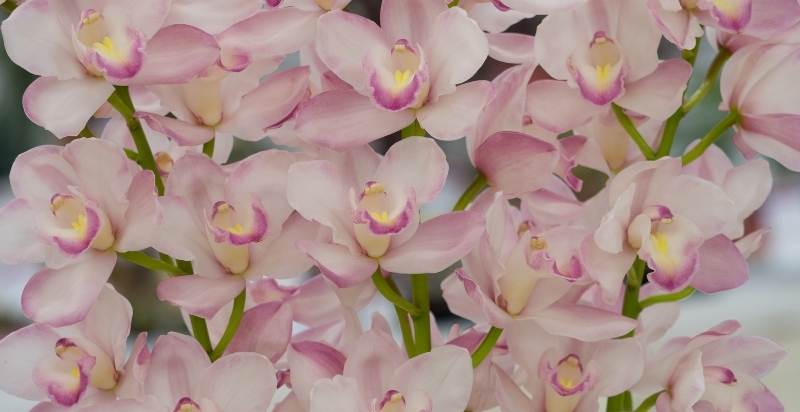
2. Dendrobiums
Dendrobiums are a type of epiphytic orchid that is native to tropical Asia. They have long, thin leaves and tall spikes of fragrant flowers. Dendrobiums come in many colors: white, pink, yellow, and purple.
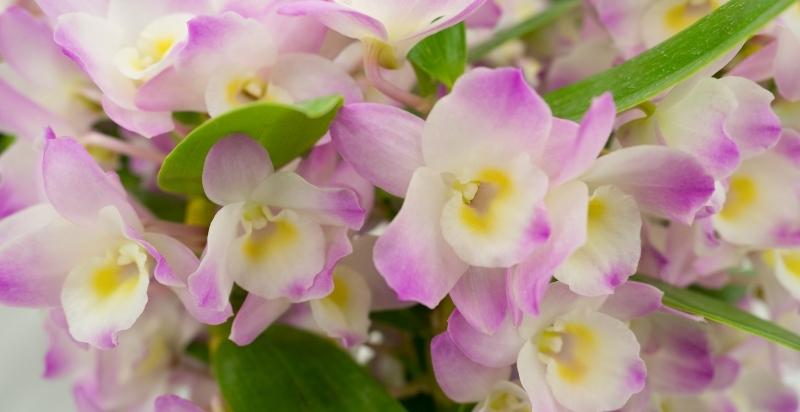
3. Paphiopedilums
Paphiopedilums, also known as lady’s slippers, is a terrestrial orchid native to tropical Asia. They have large, flat leaves and distinctively shaped flowers that resemble a lady’s slipper. Paphiopedilums come in various colors, including green, brown, yellow, and red.
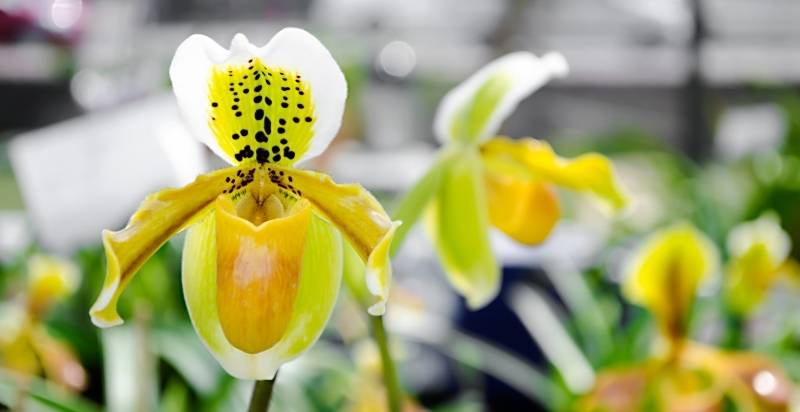
4. Phalaenopsis
Phalaenopsis, also known as moth orchids, are a type of epiphytic orchid native to Southeast Asia. They have long, narrow leaves and tall spikes of fragrant flowers. Phalaenopsis come in many colors, including white, pink, purple, and red.
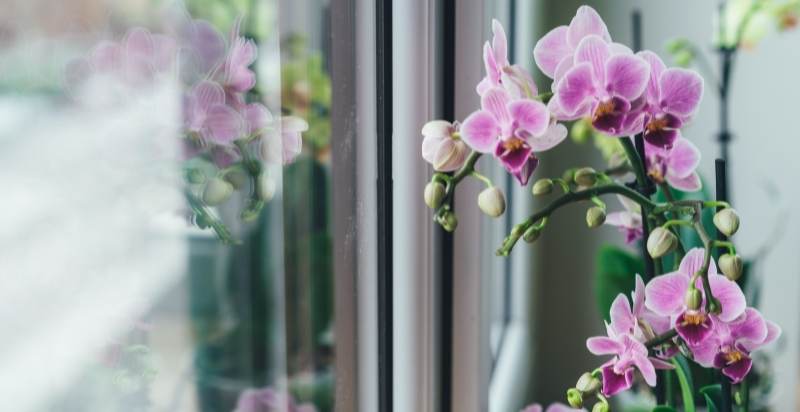
5. Vanda
Vanda is a type of epiphytic orchid that is native to tropical Asia. They have long, thin leaves and tall spikes of fragrant flowers. Vanda comes in many colors, including blue, purple, red, and yellow.
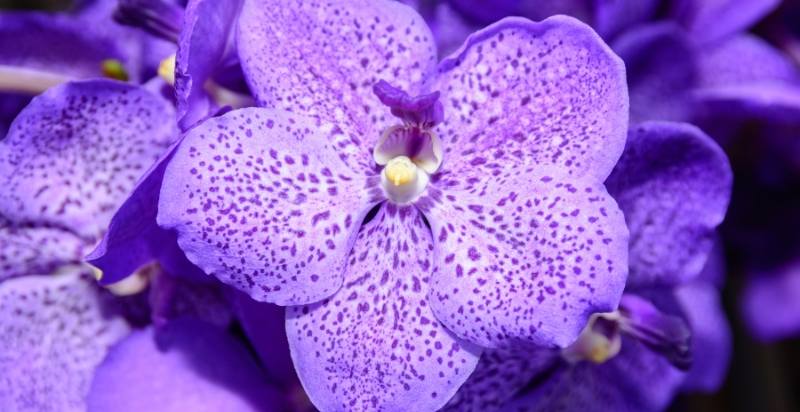
Where Can You Find These Rare Orchids?
While you may be able to find some of these orchids at your local nursery, the best place to find a wide variety of rare orchids is at an orchid show. Orchid shows are held throughout the country and offer a great opportunity to see various rare and exotic plants.
Caring for Rare Orchids:
The first step in caring for any orchid is researching the plant’s specific needs. Every species and hybrid is different, and what works for one plant may not work for another. Once you know what your orchid needs, you can provide the proper care.
1. Light
Orchids generally prefer bright, indirect light provided by a north- or east-facing window or an artificial light source. If you’re using artificial lighting, fluorescent bulbs are typically the best option.
2. Water
Orchids should be watered about once a week using lukewarm water, and be sure to allow the potting mix to dry out somewhat between waterings. Overwatering is one of the most common problems with orchids, so it’s important not to let the plant sit in water.
3. Fertilizer
During the growing season, orchids need fertilization around once a month. Use a balanced fertilizer diluted to half-strength. Never fertilize a dry orchid; water the plant, then apply the fertilizer.
4. Potting Mix
Most orchids prefer a light, well-draining potting mix. Various mixes are available for purchase, or you can make your own. Be sure to choose a mix that is appropriate for your particular plant.
5. Repotting
Orchids should be repotted every one to two years, depending on the plant size and pot. Repotting helps refresh the potting mix and allows the plant to grow.
- When to Repot: A few indicators indicate that it’s time to repot your orchid. If you see roots coming out of the drainage holes, if the plant is pot-bound (the roots are tightly packed in the pot), or if the potting mix is breaking down and no longer draining well, it’s time to repot.
- How to Repot: When repotting your orchid, use a clean pot with fresh potting mix. Remove the plant from its previous container, then shake off any extra dirt. Carefully untangle the roots and spread them out in the new pot. Add fresh potting soil to the area around the roots, then thoroughly water.
How Should These Unique Orchids Be Cared For?
The best way to care for rare orchids is to research the specific needs of each plant. While all orchids need well-drained soil and bright light, each type has unique requirements. By doing your research before you purchase an orchid, you can be sure that you are choosing a plant that you can care for successfully.
Final Thoughts
Orchids are a diverse and fascinating group of plants. With proper care, they can be easy to grow and long-lasting. With so many different types available, there’s an orchid to suit every taste. So why not give one a try? This has helped you to learn more about rare orchids. These beautiful plants will surely add interest and beauty to any home or garden. With a little research, you can find the perfect rare orchid to add to your collection.
- Everything You Wanted to Know About Red Tamarillos - June 2, 2025
- A Guide to Tulips: Everything You Need to Know & More… - June 2, 2025
- Guanabana: Description, Flavor, Benefits, And Uses - May 27, 2025

2 thoughts on “Rare Orchids: The Ultimate Guide”
Comments are closed.